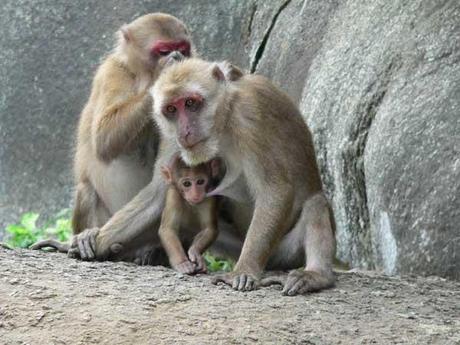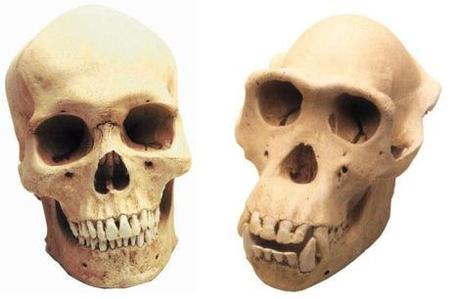Humans do many things that seem to make no sense, evolutionary speaking. Things like altruism, monogomy and infanticide. If we really did evolve to survive and reproduce, why do we invest resources in ensuring someone else survives, why do we limit our mating options and so on?
This paradox has puzzled many scientists and prompted a lot of research. Over the years we’ve discovered that there are many situations in which this seemingly selfless ideas can actually benefit the individual. Helping others, for example, can be useful if you live in a group where you regularly interact with the same set of people. By aiding others you encourage them to return the favour when you’re in need of assistance. Everyone wins (Bird, 1997).
Research published a few weeks ago has helped shed light on another of these paradoxes: monogamy. An international team of researches studied over 200 primate species and found the only behavior which reliably predicted monogamy was infanticide, suggesting that was the driving force behind the development of stable relationships.
Females don’t tend to mate for a while after they’ve had children, investing their resources in helping what they have rather than trying to make more babies. Many rival males will try and exploit this situation by killing other male’s offspring, prompting the females to become more receptive to their advances. By remaining with the female in a monogamous relationship, the male can help protect their offspring from these horny murderers (Opie et al., 2013).
You’ve probably heard of this research, it proved very popular and rapidly spread through the media; being featured at places like New Scientist. However, even newer research suggests that infanticide is not the sole force that drove the evolution of monogamy.
A German team examined relationships in baboons and found that their monogamous relationships tended to last between 3 – 5 years; much longer than the period when their offspring is vulnerable to infanticide. As well as suggesting there are other forces driving the development of monogamy, this study is interesting because Macaques are traditionally highly promiscuous (I like to imagine Macaques protesting these monogamous families, claiming they don’t represent traditional baboon values). As such this research may provide clues as to how monogamy spontaneously develops in species without much history of the behavior.

A group of macaques. Alas I don’t know if they’re a monogamous family, but they look awfully cute regardless.
But just why were these Macaques turning their back on the traditional lifestyle? The researchers’ first hypothesis was that long term relationships formed because males were assisting females throughout the year in return for exclusive mating rights during mating season. However when they tested this they found that being nice to the ladies prior to mating season didn’t increase the chances of getting lucky when it came time to mate (although being nice to mating season did increase those chances, but that doesn’t really tell us why they hang out when it isn’t mating season) (Ostner, 2013).
Their next hypothesis was that it was linked to paternity certainty. Whilst a mother can be sure who her children are it can be difficult for the father to know which offspring are theirs. Some have argued that this is one reason males are often unwilling to engage in monogamous relationships: why invest resources in a kid who isn’t yours? (Bressen, 2002)
Perhaps unsurprisingly, these researchers found that males were more likely to stick with the mother and children the lower this uncertainty was. If the males had mated with the females enough times to be confident that any children she had were theirs then they were much more likely to maintain a relationship with mother and child when the mating season was over (Ostner, 2013).
It’s worth noting that these findings do not contradict the earlier research into the relationship between infanticide and monogamy. All this really means is that multiple forces that drove the evolution of this behavior (each perhaps being of varying importance in different species). This is something the infanticide researchers expected, and they predicted there were more factors yet to be discovered. In all likelihood there are probably even more we have yet to discover.
But can this discovery tell us about the evolution of monogamy in humans? Over the past few million years sexual dimorphism in our lineage has been decreasing, suggesting that there has been less fighting over females (Nakahashi and Horiuchi, 2012). This in turn may suggest less promiscuity, which would increase our ancestors paternity uncertainty. Thus it’s perfectly plausible that this may be one of the reasons humans tend to stick with their partners for life.

A human male and chimp male. Note how our canines aren’t as pointy as a chimps, a sign we don’t phyiscally fight over women as much.
However this evidence is purely circumstantial and we can’t say for sure this is why human society is set up in this manner. Nonetheless, by showing that there are scenarios in which monogamy can evolve this research proves that the behavior isn’t as paradoxical as it may seem. It’s also of great interest to those more interested in macaque evolution than human evolution, but they can go get their own blog.
References
Bird, D. W. (1997). Delayed reciprocity and tolerated theft: The behavioral ecology of food-sharing strategies. Current Anthropology, 38(1), 49-78.
Bressan, P. (2002). Why babies look like their daddies: Paternity uncertainty and the evolution of self-deception in evaluating family resemblance. Acta Ethologica, 4(2), 113-118.
Nakahashi W, & Horiuchi S (2012). Evolution of ape and human mating systems. Journal of theoretical biology, 296, 56-64
Opie, C., Atkinson, Q. D., Dunbar, R. I., & Shultz, S. (2013). Male infanticide leads to social monogamy in primates. Proceedings of the National Academy of Sciences.
Ostner, J., Vigilant, L., Bhagavatula, J., Franz, M., & Schülke, O. (2013). Stable heterosexual associations in a promiscuous primate. Animal Behaviour.

